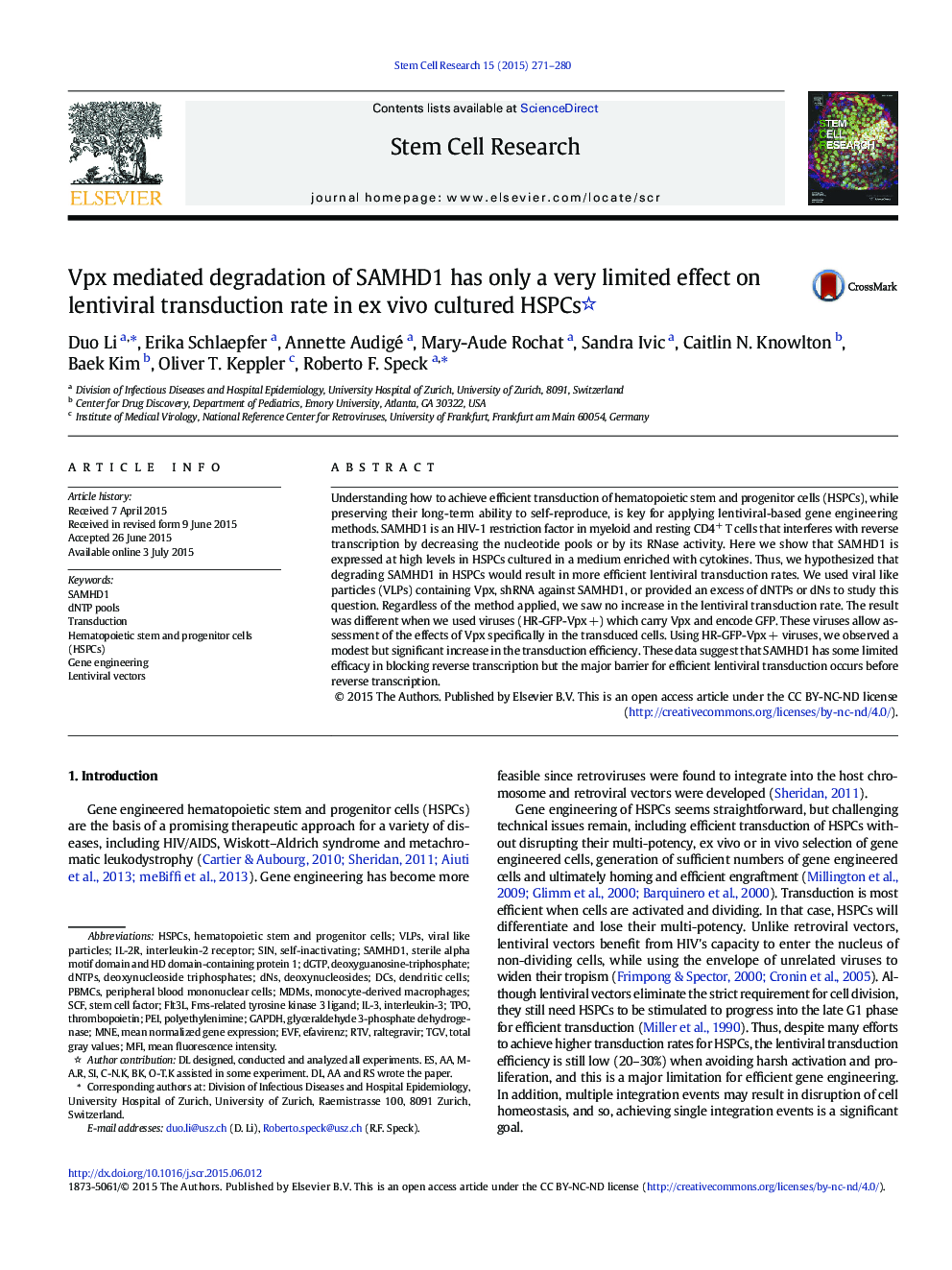| Article ID | Journal | Published Year | Pages | File Type |
|---|---|---|---|---|
| 2094137 | Stem Cell Research | 2015 | 10 Pages |
•SAMHD1 is highly expressed in HSPCs already at 2 h culturing in a medium enriched with cytokines conventionally used for transduction of HSPCs.•Expression levels of SAMHD1 in cultured HSPCs are comparable to those found in MDMs.•HSPCs exposed to HR-GFP-Vpx + showed significant increase of GFP+ cells which was associated with a decrease in SAMHD1 expression.•GFP+ cells were detected mostly within the population of cells containing low amounts of SAMHD1.
Understanding how to achieve efficient transduction of hematopoietic stem and progenitor cells (HSPCs), while preserving their long-term ability to self-reproduce, is key for applying lentiviral-based gene engineering methods. SAMHD1 is an HIV-1 restriction factor in myeloid and resting CD4+ T cells that interferes with reverse transcription by decreasing the nucleotide pools or by its RNase activity. Here we show that SAMHD1 is expressed at high levels in HSPCs cultured in a medium enriched with cytokines. Thus, we hypothesized that degrading SAMHD1 in HSPCs would result in more efficient lentiviral transduction rates. We used viral like particles (VLPs) containing Vpx, shRNA against SAMHD1, or provided an excess of dNTPs or dNs to study this question. Regardless of the method applied, we saw no increase in the lentiviral transduction rate. The result was different when we used viruses (HR-GFP-Vpx +) which carry Vpx and encode GFP. These viruses allow assessment of the effects of Vpx specifically in the transduced cells. Using HR-GFP-Vpx + viruses, we observed a modest but significant increase in the transduction efficiency. These data suggest that SAMHD1 has some limited efficacy in blocking reverse transcription but the major barrier for efficient lentiviral transduction occurs before reverse transcription.
